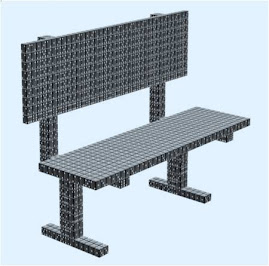Model-driven engineering - Wikipedia, the free encyclopedia: "Model-driven engineering
From Wikipedia, the free encyclopedia
(Redirected from Model Driven Engineering)
Jump to: navigation, search
The introduction to this article provides insufficient context for those unfamiliar with the subject.
Please help improve the article with a good introductory style.
Model-driven engineering (MDE) is a software development methodology which focuses on creating models, or abstractions, more close to some particular domain concepts rather than computing (or algorithmic) concepts. It is meant to increase productivity by maximizing compatibility between systems, simplifying the process of design, and promoting communication between individuals and teams working on the system.
A modeling paradigm for MDE is considered effective if its models make sense from the point of view of the user and can serve as a basis for implementing systems. The models are developed through extensive communication among product managers, designers, and members of the development team. As the models approach completion, they enable the development of software and systems.
The best known MDE initiative is the Object Management Group (OMG) initiative Model-Driven Architecture (MDA), which is a registered trademark of OMG.[1]
Contents
[hide]
* 1 History of MDE
* 2 MDE as used in software engineering
* 3 See also
* 4 References
* 5 Further reading
* 6 External links
[edit] History of MDE
The first tools to support MDE were the Computer-Aided Software Engineering (CASE) tools developed in the 1980s. Companies like Integrated Development Environments (IDE - StP), Cadre Technologies, Bachman Information Systems, and Logicworks (BP-Win and ER-Win) were pioneers in the field. But CASE had the same problem that current MDA/MDE tools have today: the model gets out of sync with the application (see below). The government got involved in the modeling definitions creating the IDEF specifications. With several variations of the modeling definitions (see Grady Booch, Jim Rumbaugh, Ganes, Sarson, Harel, Shlaer, Mellor, and others) they were eventually joined creating the Unified Modeling Language (UML). Rational Rose, the dominant product for UML implementation, was done by Rational Corporation (Booch) which in 2002 was acquired by IBM.
[edit] MDE as used in software engineering
As it pertains to software development, model-driven engineering refers to a range of development approaches that are based on the use of software modeling as a primary form of expression. Sometimes models are constructed to a certain level of detail, and then code is written by hand in a separate step. Sometimes complete models are built including executable actions. Code can be generated from the models, ranging from system skeletons to complete, deployable products. With the introduction of the Unified Modeling Language (UML), MDE has become very popular today with a wide body of practitioners and supporting tools. More advanced types of MDE have expanded to permit industry standards which allow for consistent application and results. The continued evolution of MDE has added an increased focus on architecture and automation.
MDE technologies with a greater focus on architecture and corresponding automation yield higher levels of abstraction in software development. This abstraction promotes simpler models with a greater focus on problem space. Combined with executable semantics this elevates the total level of automation possible. The Object Management Group (OMG) has developed a set of standards called model-driven architecture (MDA), building a foundation for this advanced architecture-focused approach.
Model-integrated computing is yet another branch of MDE.
According to Douglas C. Schmidt, model-driven engineering technologies offer a promising approach to address the inability of third-generation languages to alleviate the complexity of platforms and express domain concepts effectively[2].
[edit] See also
* Model transformation (QVT)
* Language-oriented programming (LOP)
* Domain-Specific Modeling (DSM)
* Domain Specific Language (DSL)
* Model-based testing (MBT)
* Software factory (SF)
* Business-driven development (BDD)
* Generic Eclipse Modeling System (GEMS)
* Eclipse Modeling Framework (EMF)
* Graphical Modeling Framework (GMF)
* Modeling Maturity Level (MML)
* Service-Oriented Modeling Framework (SOMF)
* Application Lifecycle Management (ALM)
[edit] References
1. ^ Object Management Group (2006-05-24). 'OMG Trademarks'. Retrieved on 2008-02-26.
2. ^ Schmidt, D.C. (February 2006). 'Model-Driven Engineering'. IEEE Computer 39 (2). http://www.cs.wustl.edu/~schmidt/PDF/GEI.pdf. Retrieved on 16 May 2006. , 'A promising approach to address platform complexity — and the inability of third-generation languages to alleviate this complexity and express domain concepts effectively — is to develop Model-Driven Engineering (MDE) technologies...'
[edit] Further reading
* Model Driven Architecture: Applying MDA to Enterprise Computing, David S. Frankel, John Wiley & Sons, ISBN 0-471-31920-1
[edit] External links
* Model-Driven Architecture: Vision, Standards And Emerging Technologies at omg.org
* On the Unification Power of Models.
* A podcast discussion on Model-Driven Software Development.
* Article Making model-based code generation work
* International School on Model-Driven Design for Distributed, Realtime, Embedded Systems (MDD4DRES)"
Assinar:
Postar comentários (Atom)


Nenhum comentário:
Postar um comentário